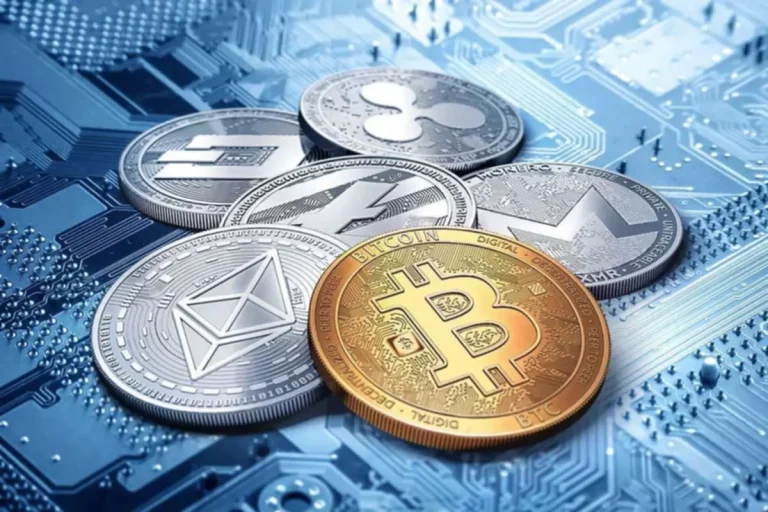This address is unique in that it lacks a corresponding private key, ensuring that tokens sent there can never be moved or accessed by anyone. As counterintuitive as it may sound, token burns actually benefit developers as well as investors by giving projects a competitive advantage. Stabilizing the value and curbing inflation may be achieved by burning tokens. As a result of the price stability, investors are more likely to hang on to their coins, which in turn helps to maintain the network’s uptime and bandwidth robust. In the early phases of a coin’s creation, token burns convey a feeling of trust and dependability. Burning alone doesn’t guarantee a cryptocurrency’s price will increase, but it does lower the number of coins in the open market.
Finally, some miners may wish to burn their crypto to utilize proof-of-burn, as previously mentioned, to gain cheaper mining and creation of blocks. This, some may argue, is a better way for cryptocurrency to work, due to its lack of environmental impact and minimum cost to the miners. Use our list of all cryptocurrencies to see their prices in Canadian https://www.xcritical.in/ Dollars (CAD). Coinbrary’s mission is to provide you with the latest news & advice on Bitcoin and cryptocurrency and tips on personal finance generally to help you live your best life. Anyone who owns a cryptocurrency can burn it, but it’s not exactly something you’d want to do for no reason since you’d essentially be throwing money away.
Have you ever wondered what it means to burn cryptocurrency through coin burning? Coin burns are a common practice in the world of digital currencies like bitcoin and stablecoins. Well, get ready for an enlightening journey as we delve into the intriguing concept of intentionally torching digital coins through cryptocurrency burning. It’s like tossing private keys into a virtual bonfire and watching them go up in smoke with cryptocurrency burning! Coin burning, or burning cryptocurrencies, is the process of intentionally destroying digital coins in order to reduce the total supply.

If you own the tokens that are being burned, then yes, you would lose the value of those tokens. However, suppose the burn is successful and leads to an increase in the overall value of the cryptocurrency. The more coins a miner burns, the higher their chances of being selected to validate a block of transactions. This method contrasts proof-of-work (POW) and proof-of-stake (PoS), which prioritize mining power and stake in the network, respectively. Proof-of-burn (POB) is an environmentally friendly consensus algorithm in some cryptocurrencies. Miners showcase their “proof of work” by burning or destroying some coins.
Founded in 1993, The Motley Fool is a financial services company dedicated to making the world smarter, happier, and richer. The price of Shiba Inu plummeted after Buterin’s transfer to the India COVID-Crypto Relief Fund last Wednesday. As the token value and market perception improve, other what does burning crypto mean projects or organizations may take notice, opening doors for growth and expansion through collaboration or integration. While some view burnings with a skeptical eye, there’s no arguing that this strategy has become more popular — particularly for new crypto that launch with a big supply.
Burning crypto tokens is a strategic decision in the cryptocurrency realm, aimed at permanently removing a portion of tokens from circulation. This isn’t merely about supply reduction; it’s a multifaceted approach with varied implications. Here, the project’s leaders or governing body decide to burn coins as a strategic economic decision. This could be to manage token supply, respond to market conditions, or even as a corrective measure after unforeseen events. Some cryptocurrencies have inherent burning mechanisms built directly into their protocols.
It can be used to artificially inflate the value of a coin, whether you think this is the right way to operate a cryptocurrency or not. For example, to eventually be able to return lost coins to users and to make positive upgrades and improvements to the networks of relevant cryptocurrencies. For those who want to hold crypto in a portfolio, there is plenty to gain from coin burning. This is largely down to the fact that there is a high chance that the value of cryptos of which coins have been burned may increase over time. However, it’s important to note that excessive or poorly executed burns can have negative consequences. If too many tokens are burned at once or without proper consideration, it can result in decreased liquidity within the market.
The tokens are sent to a wallet address that cannot be used for transactions other than receiving the coins. The wallet is outside the network, and the tokens can no longer be used. Binance has done this several times per year; with its most recent seventh coin burn destroying around 830,000 BNB, or over $16 Million. This strategy has a significant advantage, as the size of the burn is largely determined by the market forces and price action. The choice to burn tokens is normally vested in the development team of the currency. Sometimes, coin burning might be started by the core community as well.

As a result, investors may be more likely to invest in the tokens, driving up demand and increasing the token’s value. Token burn refers to permanently removing a specific number of tokens from circulation. This is accomplished by sending the tokens to a public address from which they can never be recovered. Token burn is a deflationary mechanism where the total number of tokens in circulation decreases over time.
For instance, a project might commit to burning a certain number of tokens every time a specific goal is achieved, aligning the interests of the project and its token holders. It is permanently removed from circulation by sending the coins to an unspendable address, also known as a “burn address,” where they cannot be accessed again. Cryptocurrency burns are a strategic move to stoke the value of a particular token by reducing its circulating supply. When tokens are deliberately removed from circulation, scarcity is created, typically driving up demand for the remaining tokens.
- Therefore, it can be argued that a coin burning mechanism is a more equitable and fairer way of distributing value to all participants in the network.
- Coin burning is an effective tool to signal a firm commitment by a cryptocurrency project.
- New cryptocurrencies that have a large initial supply of tokens are becoming more and more common.
- The decision to burn crypto may be written into a project’s whitepaper prior to launch, outlining full intent to nix fractions of its supply along the way.
- With fresh interest and support, projects can harness the momentum to push forward and realize their ambitions.
It may also be put to a community vote, letting the decentralized autonomous organization, or DAO, decide whether to burn or not to burn. Crypto burning may be implemented into a project as an automatic, built-in mechanism, routine maintenance run on a periodic schedule or as a one-off event. Learn more about Consensus 2024, CoinDesk’s longest-running and most influential event that brings together all sides of crypto, blockchain and Web3.
A decay rate is typically used to get around this issue, which essentially limits the overall ability of individual miners to verify transactions. PoB is similar to PoS in that both demand miners to lock up their assets to mine. Staker’s coins may be reclaimed via PoS, as opposed to PoB if they stop mining. In March of 2023, the cryptocurrency community lost a one-of-a-kind asset in an accidental “burning” incident. Web3 enthusiast Brandon Riley thought he was getting a loan on a unique virtual collectible—a non-fungible token (NFT)—from the elite CryptoPunks NFT collection.
The two most popular consensus algorithms are proof of work and proof of stake; proof of burn is a newer alternative. Coin burning happens when a cryptocurrency token is intentionally sent to an unusable wallet address to remove it from circulation. The address, which is called a burn address or eater address, can’t be accessed or assigned to anyone. “Burning” is a term used to describe the process of removing cryptos from the circulation. A certain amount of assets is sent to an inaccessible address, never to be used again. This practice can amplify a token’s rarity and, in turn, its potential worth.
